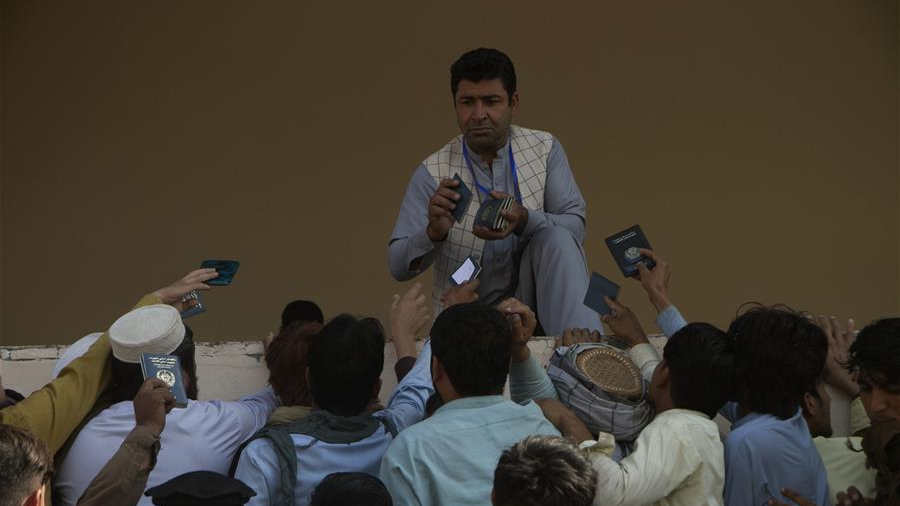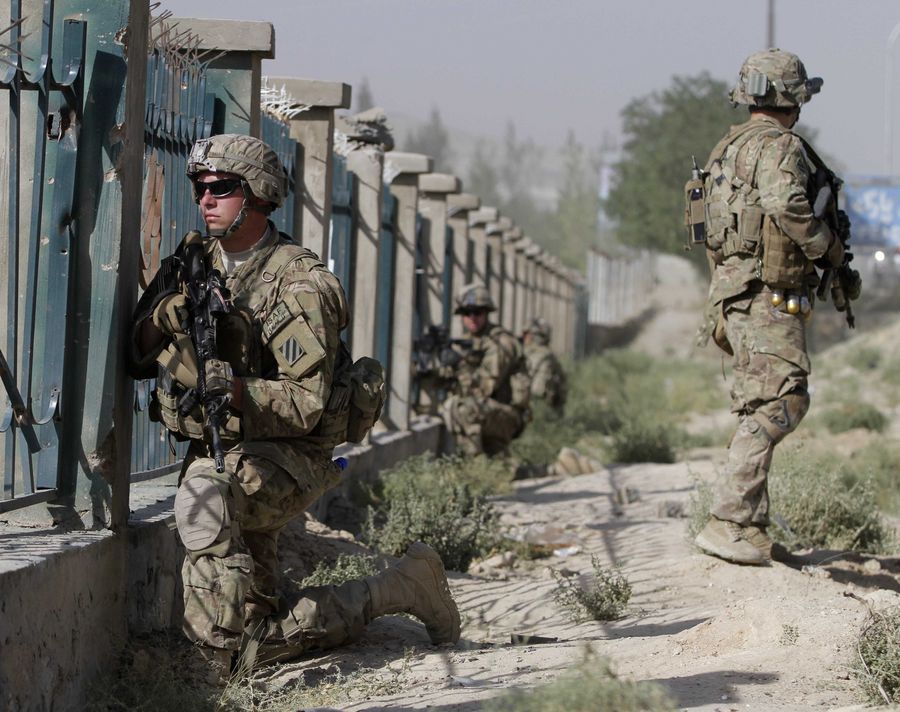
People submit passports to obtain Pakistan's visa in Jalalabad city, Nangarhar province, Afghanistan, October 21, 2020. /Xinhua
People submit passports to obtain Pakistan's visa in Jalalabad city, Nangarhar province, Afghanistan, October 21, 2020. /Xinhua
Editor's note: Keith Lamb is a University of Oxford graduate with an MSc degree in Contemporary Chinese Studies. His primary research interests are international relations of China and China's "Socialism with Chinese Characteristics." The article reflects the author's opinions, and not necessarily the views of CGTN.
At least 15 Afghans were trampled to death and more than a dozen injured in a stampede on October 21, which occurred in a stadium in Jalalabad city where thousands gathered to secure visas to enter Pakistan. These thousands waiting for visas to escape the U.S.-occupied Afghanistan represents just a fraction of Afghanis already in Pakistan.
According to the UN Refugee Agency, there are 2.7 million Afghan refugees worldwide, with 90 percent of them being hosted by Iran and Pakistan. The same agency estimates that 1.3 million Afghan refugees live in Pakistan.
This neglected refugee catastrophe has been created by the nadir of human rights atrocities, which is war. War is a primary tool of hegemonism for, aside from the casualties and the destruction of livelihoods, it maintains and creates uneven development conditions, which restricts the rise of equals that would lead to international democracy.
With a GDP per capita of $1,279 in 2020, Pakistan is by no means a wealthy country. The influx of refugees demonstrates both the generosity of Pakistan and the desperation of these Afghan refugees.
Afghanistan, in comparison to Pakistan, is significantly poorer with a GDP per capita of $531. According to the IMF, its GDP stands at just $20.68 billion, which ranks its economy 116th in the world, just above Mali, which has almost half as many people as Afghanistan.
In contrast, the U.S. spends more than double the amount on occupying Afghanistan – $52 billion was spent in Afghanistan in 2019 alone.
With private contractors increasingly taking over from U.S. forces, war is clearly not only a means of geopolitical domination but a profitable racket too.
If the U.S. planned to enforce its idea of "freedom" and "democracy," it has been an unmitigated disaster. The 2020 Index of Economic Freedom shows that Afghanistan's economic freedom score of 54.7 ranks it globally in 136th place, just above Niger and Lesotho.

American soldiers patrol in Afghanistan, September 8, 2013. /Xinhua
American soldiers patrol in Afghanistan, September 8, 2013. /Xinhua
Where Afghanistan does "shine," economically, is in opium cultivation, which had previously been eradicated by the spring of 2001 under the Taliban's control. In contrast, the 2020 World Drug Report carried out by the United Nations Drugs and Crime Office (UNODC) shows that in 2019, of the estimated total 240,800 hectares of global illicit cultivation of opium, 163,000 are in Afghanistan. This cultivation, of course, also feeds into the U.S. opioid crisis.
No doubt, those who believe America's overseas wars are just will point to Afghan liberal democracy, established within the chaos of poverty and war, as some compensation to counteract the misery endured by Afghanistan's millions.
The U.S. governmental website USAID with its motto "From the American People" states that: "Since 2002, USAID has supported participatory, democratic processes that empower Afghan citizens; promote accountability and transparent governance; encourage national unity; and serve the needs of the Afghan people." However, where is the accountability, the transparency, the national unity when "democracy" is bombed into creation? To call this "democracy" is an insult to not just the Afghanis, but the whole of humanity too.
The last Afghanistan elections held on September 28, 2019, saw a miserable turnout of 26 percent, which, due to ballot-rigging, maybe even lower. The fact is Afghanis, who live daily amongst inequality, scarcity, and corruption, know through their experience the fraudulent nature of their system.
No wonder Afghanistan today faces a major heroin problem as millions self-medicate to escape their destitution and pain. The United Nations 2015 Afghanistan Drug Report estimates that there are up to 2.4 million Afghani drug users. This is a dramatic rise from 200,000 users in 2005, which was already sky-high considering the annihilation of opium by the Taliban pre-U.S. invasion.
This dire situation is what $978 billion buys, which is the estimated total cost of U.S. spending on the Afghan war since 2001, according to a Brown University study.
Afghanistan's disaster is not the result of good intentions gone adrift. Behind a war, there is a human agency. Behind an opium crop is human profiteering. There is a deficit in democracy behind poverty, and indeed the material foundations for freedom and democracy are absent.
For us in the West, behind the ignorance of not recognizing that Afghanistan's situation is one of the greatest human rights atrocities of this century lies corruption deep-rooted within the U.S.-led system that remains hidden to many of its citizens.
(If you want to contribute and have specific expertise, please contact us at opinions@cgtn.com.)